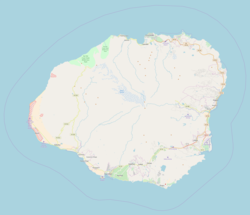
Lihue is an unincorporated community, census-designated place (CDP) and the county seat of Kauai County, Hawaii, United States. Lihue is the second-largest town on the Hawaiian island of Kauaʻi after Kapaʻa. As of the 2010 census, the CDP had a population of 6,455, up from 5,694 at the 2000 census.
Amfac, Inc., formerly known as American Factors and originally H. Hackfeld & Co., was a land development company in Hawaii. Founded in 1898 as a retail and sugar business, it was considered one of the so-called Big Five companies in the Territory of Hawaii. At its peak, it owned 60,000 acres (24,000 ha) of land, and was a dominant sugar company in Hawaii, as well as the founder of one of its best known department store chains, Liberty House. It now owns 5,000 acres (2,000 ha) of land in Kaanapali on the island of Maui. Since 2005 it is known as Kaanapali Land, LLC.

Valdemar Emil Knudsen was a sugarcane plantation pioneer on west Kauai, Hawaii.
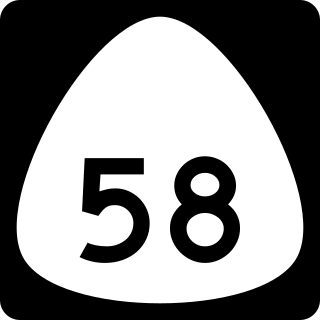
Route 58 is a two-mile (3.2 km) road that stretches from Route 50 in Lihue to the junction of Wapaa Road with Hawaii 51 near Nawiliwili Harbor on Kauaʻi island.
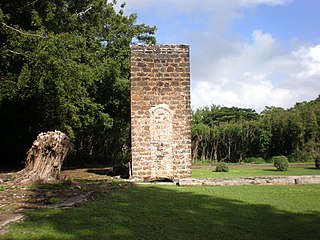
The Old Sugar Mill of Kōloa was part of the first commercially successful sugarcane plantation in Hawaiʻi, which was founded in Kōloa on the island of Kauai in 1835 by Ladd & Company. This was the beginning of what would become Hawaii's largest industry. The building was designated a National Historic Landmark on December 29, 1962. A stone chimney and foundations remain from 1840.
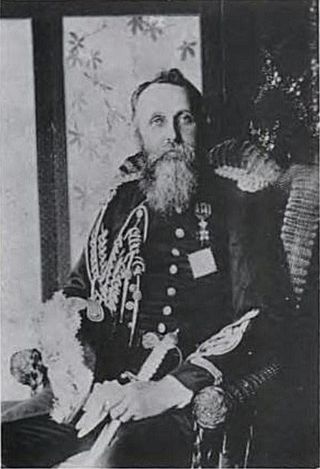
William Hyde Rice was a businessman and politician who served in the Kingdom of Hawaii, during the Kingdom's Overthrow, and in the following Republic of Hawaii and Territory of Hawaii governments. He collected and published legends of Hawaiian mythology.
Hawaii is one of the few U.S. states where coffee production is a significant economic industry – coffee is the second largest crop produced there. The 2019–2020 coffee harvest in Hawaii was valued at $102.9 million. As of the 2019-2020 harvest, coffee production in Hawaii accounted for 6,900 acres of land

The Waiʻoli Mission District at Hanalei Bay, on Route 560 along the north shore of the island of Kauaʻi, is the site of a historic mission. The first permanent missionaries to the area arrived in 1834, and the district was added to the National Register of Historic Places in 1973.

There are two heritage railways in Kauai, the birthplace of Hawaiian railroading. It was added to the National Register of Historic Places on January 19, 1979.
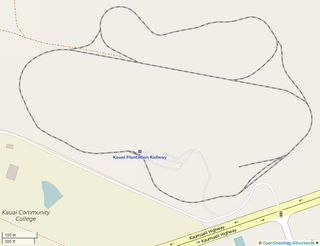
The Kauai Plantation Railway is a heritage railroad on the island of Kauai in Hawaii. Built in 2006 and opened in January 2007, the railroad operates on a 2.5-mile (4 km) long track within the Kilohana Plantation and offers passenger rides around the plantation, pulled by a 1940s diesel locomotive. It was the first new railroad to be built on the Hawaiian islands in 100 years.
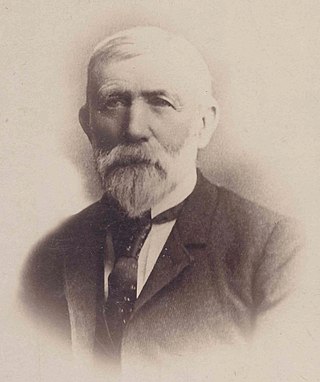
Hermann Adam Widemann was a businessman from Germany who was a judge and member of the cabinet of the Kingdom of Hawaii.

George Norton Wilcox was a businessman and politician in the Kingdom of Hawaii and Territory of Hawaii.
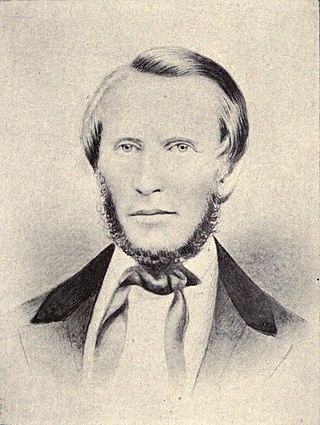
William Harrison Rice was a missionary teacher from the United States who settled in the Hawaiian Islands and managed an early sugarcane plantation.

Paul Isenberg was a German businessman who developed the sugarcane business in the Kingdom of Hawaii.

The Albert Spencer Wilcox Building is a historic building in Līhuʻe, Kauaʻi, Hawaii. Originally a library when it opened in 1924, it was later converted into the Kauaʻi Museum. It has exhibits on the history of the island of Kauaʻi. It was added to both the Hawaiʻi Register of Historic Places and the National Register of Historic Places in 1979.

Albert Spencer Wilcox was a businessman and politician in the Kingdom of Hawaii and Republic of Hawaii. He developed several sugar plantations in Hawaii, and became a large landholder.

Alexander & Baldwin Sugar Museum is located in the small sugarcane growing and milling community of Puʻunene, Hawaii, Kahului, Maui. The museum exhibits the history of Hawaiian sugarcane plantations and Alexander & Baldwin and its role in the sugarcane industry in Hawaii. The company itself continues in business and though it has diversified, it continues to produce sugarcane. The museum itself in the former mill manager's house.

Mabel Isabel Wilcox was a pioneering nurse on the island of Kauai. She served with the Red Cross in Europe during World War I, and was decorated by Elisabeth of Bavaria, Queen of Belgium and by the Mayor of Le Havre. She was instrumental in instituting public nursing services on Kauai and in getting a hospital built on the island.
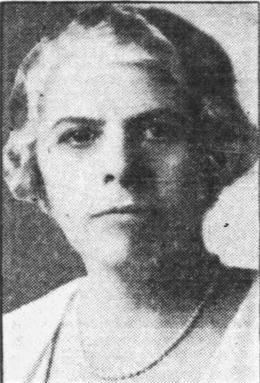
Elsie Hart Wilcox was the first woman to serve in the Senate of the Territory of Hawaii. Dedicated to public service, she rose up through the Mokihana Club on Kauai prior to the 19th Amendment to the U.S. Constitution giving women the legal right to vote in 1920. She was the descendant of missionaries who arrived in Hawaii during the 19th century, and was the sister of pioneer nurse Mabel Wilcox. Although born into an economically privileged family, she spent her adult life championing public school teachers, and volunteering in community services.

